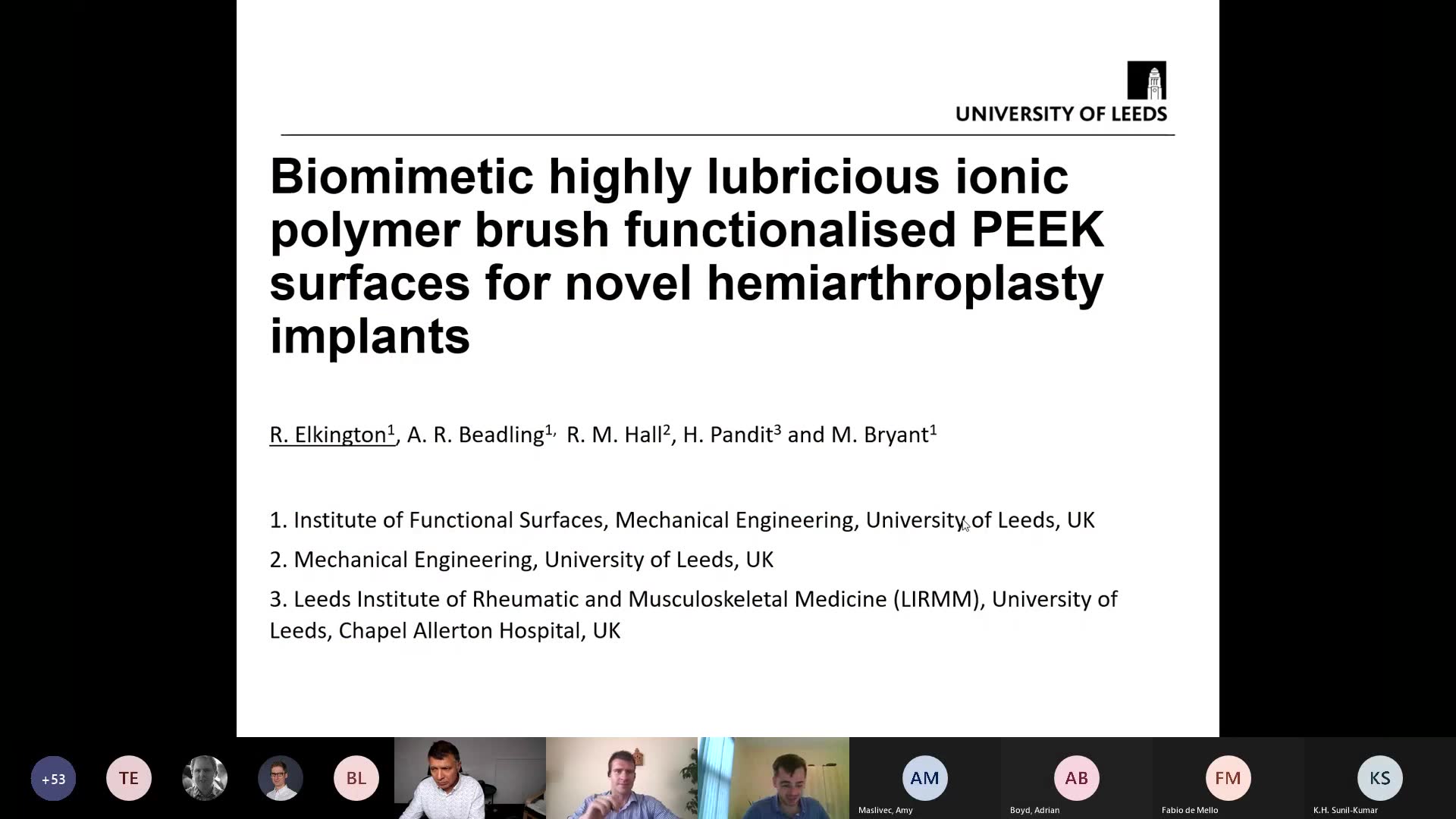Please login to view this media

- Talk
- 13/09/2021
- UK
Biometric Highly Lubricious Ionic Polymer Brush Functionalised PEEK Surfaces for Novel Hemiarthroplasty Implants
Description
In this presentation, Robert Elkington, a first-year PhD student at the University of Leeds, discusses his research on developing biomimetic, highly lubricious surfaces for hemiarthroplasty implants and focal resurfacing. He highlights the increasing prevalence of total joint replacement among younger patients, often resulting in suboptimal outcomes and high revision rates. Elkington emphasizes the limitations of current surgical materials, particularly hard biomaterials, which cause excessive stress on cartilage and lead to complications such as pain and loss of function.
Elkington draws parallels between the structural and functional qualities of natural cartilage, likening it to a sponge saturated with synovial fluid, which serves as a natural lubricant. The research aims to create implant surfaces that replicate the low friction characteristics of healthy cartilage by integrating hydrophilic polymers onto PEEK substrates. These modifications are designed to achieve an elastic, hydrated interface that reduces friction significantly during movement against cartilage.
The talk details experimental methods, including the mechanical testing of newly grafted surfaces against bovine cartilage, showcasing promising results indicating over 80% reduction in friction compared to untreated PEEK. The research suggests that the grafting of polymers can mimic the natural lubrication mechanisms found in synovial joints, presenting potential benefits for patients with cartilage damage. Elkington concludes with future directions for his research, including further tribological testing and materials characterization to evaluate longevity and clinical applicability.
The Q&A portion involves discussions about the potential patient population who might benefit from this technology, emphasizing the need to catch degenerative joint diseases earlier to prolong joint health before full replacements are necessary. The exchanges also address long-term effects and mechanical considerations of the proposed implants.